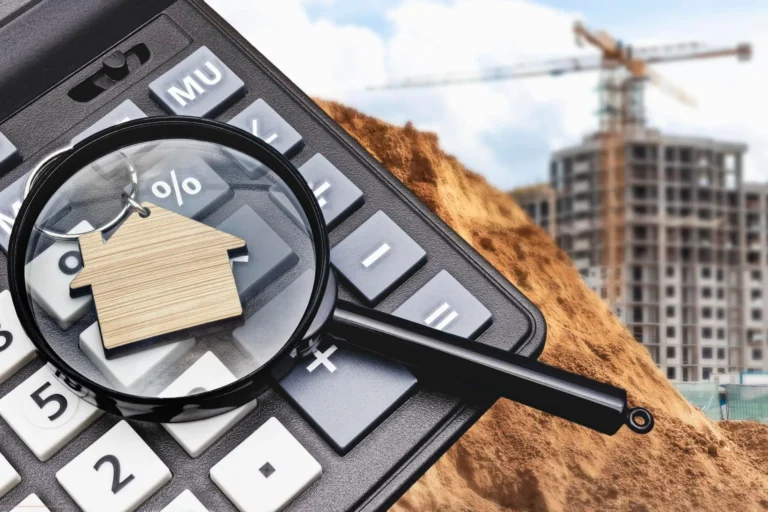The Community Infrastructure Levy (CIL) is employed within the United Kingdom to generate funding from property developers for the infrastructure essential to facilitate new developments.
CIL ensures that the developers bear expenses related to infrastructure enhancements such as roads, educational institutions, green spaces, and healthcare facilities at the initial stage. However, it should be noted that CIL is not a tax on the developer but rather a charge on the development where the end user, such as the buyer of a new home or the tenant of a new commercial property, ultimately bears the cost of the CIL.
This article will provide you with an overview of crucial facets of the Community Infrastructure Levy:
1. Purpose of CIL
The principal purpose of the CIL is to establish a more foreseeable and transparent avenue for funding crucial infrastructure in regions witnessing growth due to new construction projects. The Community Infrastructure Levy (CIL), which operates on a tariff-based model, offers the most effective framework for financing new infrastructure essential for enabling land to be developed for growth. CIL aims to achieve the following objectives:
- To fund the infrastructure by developers rather than burdening the local community or taxpayers.
- To promote fairness by distributing the financial responsibility for infrastructure evenly among developers based on the size and type of their developments.
- To provide a transparent and predictable method for calculating and collecting infrastructure contributions from developers.
- To reduce reliance on Section 106 agreements (planning obligations), which can be negotiated on a case-by-case basis and may not provide consistent funding for broader infrastructure needs.
- To benefit the community by improving local infrastructure, enhancing the quality of life for residents, and supporting economic growth.
2. Legislation & Applicability

CIL origins can be linked to the Planning Act 2008, becoming officially effective on April 6, 2010, under the Community Infrastructure Levy Regulations 2010. CIL applies to new developments covering residential, commercial, and industrial ventures. Nevertheless, specific development categories, such as self-built residences and affordable housing, may be exempt or subject to reduced rates.
The Community Infrastructure Levy offers a fairer, quicker, and more transparent alternative to utilising planning obligations (Section 106 agreements). The revenue generated from the levy can be directed toward establishing fresh local and sub-regional infrastructure, aligning with the objectives outlined in a local authority’s development plan. Although Section 106 agreements remain in use, the introduction of CIL has limited their scope.
3. Charging Authorities
CIL is a local levy, and the local planning authorities are responsible for establishing CIL rates within a given area. They are responsible for administering and implementing the levy within their respective jurisdictions. These rates can fluctuate based on location, type of development, and size.
The CIL charging authorities in England will be:
- District and Metropolitan District Councils
- London Borough Councils
- National Park Authorities
- Unitary Authorities
- The Mayor of London and The Broads Authority
In Wales, the power to charge the levy will be on:
- The County and County Borough Councils
- The National Park Authorities
- Charging authorities must adhere to national and local regulations governing the implementation of CIL, ensuring that the levy is applied fairly and transparently. Further, they often engage with local stakeholders, including developers, community groups, and residents, to gather input and feedback on CIL rates and expenditure priorities.
4. Charging Schedule & Rates
The CIL charging schedule is an official document that sets out the CIL rates for various types of development in a specific area. Charging Schedules can be reviewed and amended periodically to reflect changing local circumstances, infrastructure needs, or other factors. The local planning authority creates and adopts the CIL Charging schedule after public consultation. It must be made publicly available, and interested parties, including developers and the general public, can access them to understand the CIL rates and requirements for a specific area.
CIL will be charged per square meter or dwelling for different development categories. These rates can vary widely depending on factors such as:
- The location of the development
- The type of development (e.g., residential, commercial, industrial) and
- The size of the development, i.e., the chargeable floor space.
The amount subject to the levy is determined by multiplying the chargeable floorspace with the relevant charge rate and is subject to an index to adjust the inflation over time.
The Charging Schedule may also outline any exemptions or relief schemes that apply. Charging authorities may handle requests for exemptions or relief from certain types of development, such as affordable housing or self-build projects, where reduced or no CIL may be applicable.
5. CIL Payments
Developers are obligated to make CIL payments to the local planning authority as a condition of receiving Planning Permission for their development. This requirement is typically outlined in the planning permission notice. Developers need to factor the cost of CIL into their planning application.

CIL payments are generally due at specific stages of the development process, and the exact timing can vary depending on local regulations. Typically, payments are made before development commences or in instalments as the project progresses. The payment process usually involves filling out the necessary forms and providing details about the development, including its size and intended use. Local planning authorities maintain records of CIL payments and may issue a CIL payment receipt to developers as proof of payment.
In certain situations, there may be an agreement between the Council and the developer to provide land or specific infrastructure instead of paying all or part of the CIL liability for a particular development. This arrangement is more likely to apply to larger developments and is determined by an impartial evaluator.
Applicants are strongly advised to initiate discussions with the Council about the possibility of in-kind payments as early as the pre-application stage. Agreements for in-kind payments must be established before the development begins, and the in-kind contributions must be provided within the same timeframe as cash payments.
Non-compliance with payment requirements can result in penalties, interest charges or legal action. As CIL liability is a land charge, failure to pay CIL may result in difficulty selling the land, property or properties resulting from development. To avoid these consequences, developers must adhere to the payment schedule and meet their CIL obligations.
6. CIL Reliefs, Exemptions
CIL reliefs and exemptions play a pivotal role in shaping the development landscape in the UK. By incentivising affordable housing, supporting charitable organisations, and facilitating self-build and minor development projects, CIL reliefs and exemptions ensure that the levy remains adaptable to diverse development needs.
The Community Infrastructure Levy Regulations contain provisions allowing charging authorities to provide relief or exemptions from the levy. While certain relief types are mandatory, others are granted at the judgement of the charging authority.
Relief is not granted automatically. Developers are required to submit relief applications, and approval must be obtained before the development begins. Once construction has started, relief cannot be retroactively granted, even if it would have been eligible.
Social Affordable Housing Relief

This relief is designed to incentivise the construction of affordable homes for lower-income individuals and families. Developers can apply for this relief when they pledge to include a specific proportion of affordable housing units within their development.
Charitable Housing Relief
Charitable housing relief aims to support organisations that provide housing for those in need. Charities and social housing providers may be eligible for relief, reducing their CIL liabilities when developing properties to accommodate vulnerable populations.
Form 10: Charitable and/or Social Housing Relief Claim must be submitted to claim this relief.
Exceptional Circumstances Relief
In exceptional cases where a development faces unforeseen challenges or circumstances that make paying the full CIL amount impractical, developers can apply for exceptional circumstances relief. Local authorities consider these applications on a case-by-case basis.
Form 11: Exceptional Circumstances Relief Claim must be submitted to claim this relief.
Self- Build Homes
Individuals planning to build their homes, commonly called self-builders, often receive full CIL exemptions. It encourages self-build projects and allows people to create homes that suit their unique needs and preferences.
Form 7: Self Build Exemption Claim – Part 1 and Form 7: Self Build Exemption Claim – Part 2 need to be submitted for claiming exemptions for self-build homes.
Residential Annexes
CIL exemptions are also granted for the construction of residential annexes. This benefits families who wish to accommodate relatives or caregivers on their property without incurring additional CIL charges.
Form 8: Residential Annex Exemption Claim or Form 9: Residential Extension Exemption Claim needs to be submitted for claiming CIL exemptions for residential annexes.
Minor Developments
Certain minor developments, such as small extensions and alterations, may be exempt from CIL to avoid burdening property owners with disproportionate charges for minor improvements.
The Council has to consider State Aid provisions in deciding whether to grant relief or not, as State Aid provisions may reduce or restrict the amount of relief that can be offered.
7. Utilisation of Funds
The primary purpose of CIL funds is to finance infrastructure projects within the local area. It can include a broad range of projects, including constructing or improving roads, public transportation, schools, healthcare facilities, parks, recreational areas, and utilities like water and sewer systems.
CIL funds are typically allocated to support the objectives outlined in the local authority’s development plan. These plans often identify infrastructure needs that must be addressed to accommodate growth and development in the community.
The goal of using CIL funds is to benefit the local community. These funds help enhance the quality of life for residents by improving essential services and amenities, making the area more attractive for businesses, residents, and investors. Local planning authorities can determine how CIL funds are allocated based on their area’s specific needs and priorities.
8. Expenditure Regulations

CIL Expenditure Regulations refer to the rules and guidelines that govern how the funds collected through the Community Infrastructure Levy (CIL) are allocated and spent by local planning authorities. CIL Expenditure Regulations must comply with the legal framework established by national and local authorities. It includes adhering to the Community Infrastructure Levy Regulations and other relevant legislation.
The regulations typically outline the criteria and priorities for allocating CIL funds to specific infrastructure projects. It may include factors such as the type of development, the project’s location, and the community’s overall needs.
Some regulations may mandate public consultation or stakeholder engagement when determining how to spend CIL funds. It helps to ensure that community needs and preferences are considered.
9. Viability Assessments
Viability assessments under the Community Infrastructure Levy refer to a process in which developers can request an evaluation of the financial viability of their development projects about the CIL liability. In specific scenarios, developers may seek a viability assessment to demonstrate that paying the full CIL would render their project economically unviable.
If the viability assessment indicates that the total CIL liability would make the development financially unviable, the local authority may consider reducing the CIL liability. This reduction is typically negotiated based on the specific circumstances of the project.
The viability assessment process represents a balancing act between the financial viability of development projects and the need to collect revenue for essential infrastructure. It aims to strike a fair balance between the interests of developers and the community.
10. Monitoring and Reporting
Local authorities are mandated to monitor and produce an annual report outlining the collection and allocation of CIL funds, as it is essential to ensure transparency, accountability, and compliance with the regulations governing CIL implementation.
Annual reports include information such as the total CIL revenue collected, the projects funded by CIL, progress updates on infrastructure projects, any adjustments made to CIL rates, and a summary of how CIL funds have been utilised to benefit the community.

Monitoring and reporting under CIL are integral in managing CIL funds effectively. These processes help ensure that funds are collected, allocated, and spent transparently, aligning with the goals of supporting local infrastructure projects and benefiting the community.
11. CIL Appeals
CIL appeals are made to the Valuation Office Agency (VAO) or Planning Inspectorate (PINS). The applicant or liable party must make all appeals within the relevant timescales mentioned in the CIL regulations.
Regulation 114-Chargeable Amount Appeals
A chargeable amount appeal can be made to VOA where the applicant disagrees with the chargeable amount calculated by the Council following a review. The appeal needs to be made within 60 days, beginning with the day the Liability Notice stating the original chargeable amount was issued.
Regulation 115 -Apportionment of Liability Appeals
Apportionment of liability appeal can be made to VOA where the applicant disagrees with how the Council has apportioned CIL liability between different landowners. It must be made within 28 days, beginning with the day on which the Demand Notice stating the amount payable by an owner of a material interest is issued.
Regulations 116, 116A or 116B -Exemption and Relief Appeals
A charitable Relief Appeal under regulation 116 is made to VOA when an applicant considers the value of the charity’s interest in the land has been incorrectly determined when granting charitable relief.
Exemption for Residential Annexes Appeal under Regulation 116A is made to VOA against the Council’s Decision not to grant an exemption for a residential annexe.
Exemption for Self-Build Housing Appeal under Regulation 116B is made to VOA, where an applicant believes the exemption amount for self-build housing has been incorrectly determined.
Appeals under Regulation 116,116A or 116B can be made Within 28 days beginning with the day of the collecting authority’s decision on the relief claim.
Access the appeal form to be submitted to Valuation Office Agency (VAO)
Schedule 1 (paragraph 9) – Notional Relief Appeal
A Notional Relief Appeal is made when you disagree with the collecting authority’s decision on the amount of notional relief allowed. It must be made within 60 days, beginning with the day the Liability Notice stating the chargeable amount (and the amount of notional relief) was issued.
Regulation 117- Surcharge Appeal
A surcharge appeal can be made to the Planning Inspectorate (PINS) where an applicant disagrees with an imposed surcharge. It can be made under the following circumstances:
- The claimed breach that led to the imposition of a surcharge did not occur.
- The collecting authority did not serve a liability notice regarding the chargeable development to which the surcharge relates.
- The surcharge has been miscalculated.
Appeals against a surcharge must be made within 28 days of the surcharge.
Regulation 118- Deemed Commencement Appeal
Deemed commencement appeal can be made to PINS where an applicant believes that the Council has incorrectly identified the commencement date. Appeals against a deemed commencement must be made within 28 days of the notice date.
Access the appeal form to be submitted to the Planning Inspectorate (PINS)
Regulation 119- Stop Notice Appeal
A Stop Notice appeal can be made where an applicant disagrees with the Council’s decision to impose a stop notice on development.
You may formally appeal a CIL stop notice if you are aggrieved at the decision of the Council to impose a stop notice on the following grounds:
- The Council did not serve a warning notice before imposing the CIL stop notice.
- The development to which the CIL stop notice was served has not commenced.
The CIL stop notice continues to have effect while the appeal is outstanding. Any such appeal must be made before the end of 60 days, beginning with the date the CIL stop notice takes effect.
12. Forms & Templates

Understanding and effectively managing CIL forms is essential for developers and stakeholders involved in the planning and development of new projects. These forms serve as the bridge between development proposals and vital infrastructure funding, making them a pivotal component of the CIL process.
Form 1: CIL Additional Information
Form 1: CIL Additional Information facilitates communication between developers and local planning authorities by providing additional information crucial for calculating CIL liability accurately. Developers must provide detailed information about the development, including its description, location, and size.
Form 2: Assumption of Liability
Form 2: Assumption of Liability facilitates the transfer of financial responsibility from developers to landowners. This document recognises the complexities and differences in interests between these two parties and allows them to formalise their agreement regarding CIL liability. This form contains the details about the developer & landowner, including their name, address, and contact information. This form should be used to assume liability before the commencement of development.
Form 3: Withdrawal of Assumption of Liability
Form 3: Withdrawal of Assumption of Liability reverses the transfer of CIL liability back to the developer from landowners. The decision to assume CIL liability often lies with the landowner. If, for any reason, they wish to withdraw their assumption of liability and transfer it back to the developer, Form 3 formalises this change. This form contains the details about the developer & landowner, including their name, address, contact information, and the development details.
Form 4: Transfer of Assumed Liability

Through Form 4, Parties may transfer liability to pay at any time up to the day before the date when final payment is due. Form 4 is vital for reassigning CIL liability from a landowner to the developer when circumstances necessitate this change.
Form 5: Notice of Chargeable Development
Form 5: Notice of Chargeable Development should be submitted when a development is granted by general consent. Where development exceeds 100 sqm of net additional floorspace or involves the creation of one or more dwellings, the developer will be required to complete and submit Form 5 before the commencement of any works. It serves as the official notice to the local planning authority that the development is subject to CIL.
Form 6: Commencement Notice
Form 6: Commencement Notice is an official notice to the local planning authority that the development is about to commence. It contains the details of the development along with the development commencement date. It officially notifies the local planning authority of the start date of a development project, initiating CIL liability.
Form 7 Part 1: Self-Build Exemption Claim
Form 7 Part 1: Self-Build Exemption Claim is the tool self-builders use to declare their status to the local planning authority. It helps distinguish self-build projects from other types of developments, as self-builders may be eligible for exemption or reduced CIL rates. Self-builders must provide specific details about their project, including the development’s location, size, and nature.
Form 7 Part 2: Self-Build Exemption Claim
Form 7 Part 2: Self-Build Exemption Claim must be completed in full and submitted within six months of the date of the building completion notice. This form acts as evidence that the project is self-build. The evidence must comprise the following:
- Proof of the date of completion
A copy of the building completion or compliance certificate for the home issued by Building Control can be presented as proof of the completion date.
- Proof of ownership
A copy of the title deeds (freehold or leasehold) can be presented as proof of ownership.
- Proof of occupation of the dwelling as the applicant’s principle residence
A Council Tax Certificate and two further proofs of occupation of the home as a principle residence (a utility bill or bank statement or confirmation that the applicant is on the local electoral roll) can be presented as proof of occupation of the dwelling.
Form 8: Residential Annex Exemption Claim

Form 8: Residential Annex Exemption Claim is the tool developers use to officially declare their intention to develop a residential annex to the local planning authority. It helps distinguish annex developments from other residential projects, as annex developers may be eligible for exemption or reduced CIL rates.
Form 9: Residential Extension Exemption Claim
Form 9: the Residential Extension Exemption Claim is a document designed to provide potential savings to developers of residential extensions. It acknowledges the unique nature of extension projects and offers a means to reduce or exempt them from CIL liability potentially.
Form 10: Claiming Charitable and Social Housing Relief
Form 10: Claiming Charitable and Social Housing is a document specifically created to provide relief to charitable organisations and social housing providers from the CIL liability. It must be sent to the authority, and exemption must be obtained before development is commenced.
Form 11: Claiming Exceptional Circumstances Relief
Form 11: The Exceptional Circumstances Relief Claim form, is a document created to address situations where developers face extraordinary challenges or conditions that merit relief from the CIL liability. This form includes the developer information, development details and supporting information for claiming exceptional circumstances relief.
Form 12: Claiming Further Charitable or Social Housing Relief (when development is altered)
Form 12 Further Charitable and or Social Housing Relief provides a pathway for charitable organisations and social housing providers to adjust their CIL relief claims when the nature of their development undergoes changes. It typically includes details about the charitable organisation or social housing provider, including their names, contact information, and details about their involvement in the project, along with development details and justification for altered relief.

Form 13: Claiming Further Self-Build Dwelling, Residential Annex or Residential Extension Exemption
Form 13 Residential Extension Exemption enables individuals or groups to adjust exemption claims when project plans change, ensuring that the exemption aligns accurately with the revised project. Form 13 recognises that self-build, annex, or extension projects can evolve. It offers a pathway for individuals or groups to adapt exemption claims accordingly while contributing to funding essential infrastructure projects.
Form 14: Phase Credit Application
Form 14 Phase Credit Application provides developers of multi-phased projects with a mechanism to manage their CIL liability by applying phase credits earned in one part of the development to offset CIL liability in another. It acknowledges the complexity of multi-phased developments and offers a means to manage CIL liabilities efficiently.
12. Benefits and Criticisms
The Benefits of CIL are:
- Funding for Infrastructure
CIL generates revenue to fund infrastructure projects such as roads, schools, healthcare facilities, and parks. This supports the growth of communities without placing the entire financial burden on taxpayers.
- Fair & Predictable
CIL provides a fair and transparent system for calculating developer contributions based on development size and type. Developers can predict their financial obligations more reliably.
- Local Authority Autonomy
Local planning authorities can set CIL rates and allocate funds according to their specific needs and priorities, aligning with local development plans.
- Community Benefits
CIL-funded infrastructure projects enhance the quality of life for residents, improving local amenities and services.
- Reduced Dependency on Section 106 Agreements
CIL reduces reliance on Section 106 agreements (planning obligations), streamlining the planning process and providing a consistent funding source for infrastructure.
The Criticisms Related to CIL are:
- Increased Development Costs
CIL increases the overall development cost, potentially leading to higher property prices and reduced affordability.
- Complexity and Administrative Burden
CIL is complex and administratively burdensome, especially for smaller developers who may lack resources for compliance.
- Impact on Viability
In some instances, paying the full CIL amount can make development financially unviable, leading to delays or cancellations of projects.
- Inflexibility
CIL lacks flexibility in addressing the unique needs of different developments or areas. One-size-fits-all rates may not account for local variations.
- Administrative Costs
A portion of CIL revenue is absorbed by administrative costs, reducing the overall effectiveness of funds for infrastructure.
Conclusion
The Community Infrastructure Levy, often called the ‘levy,’ represents a fee that local authorities can impose on new developments within their jurisdiction. It empowers local authorities to secure the necessary funding for the infrastructure supporting growth and sustainable development in their locality. Further, it assists local authorities in procuring financing for vital services and amenities, supporting burgeoning communities while alleviating some of the financial burden from taxpayers and shifting it onto developers.









